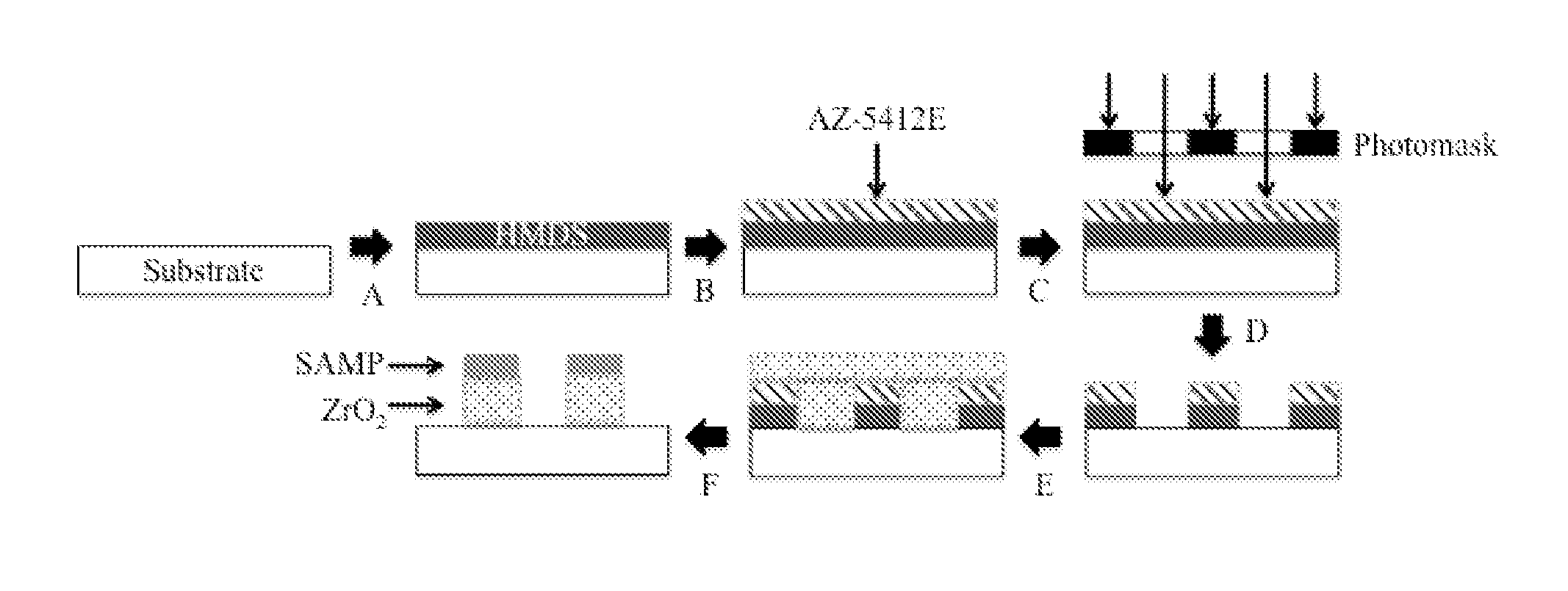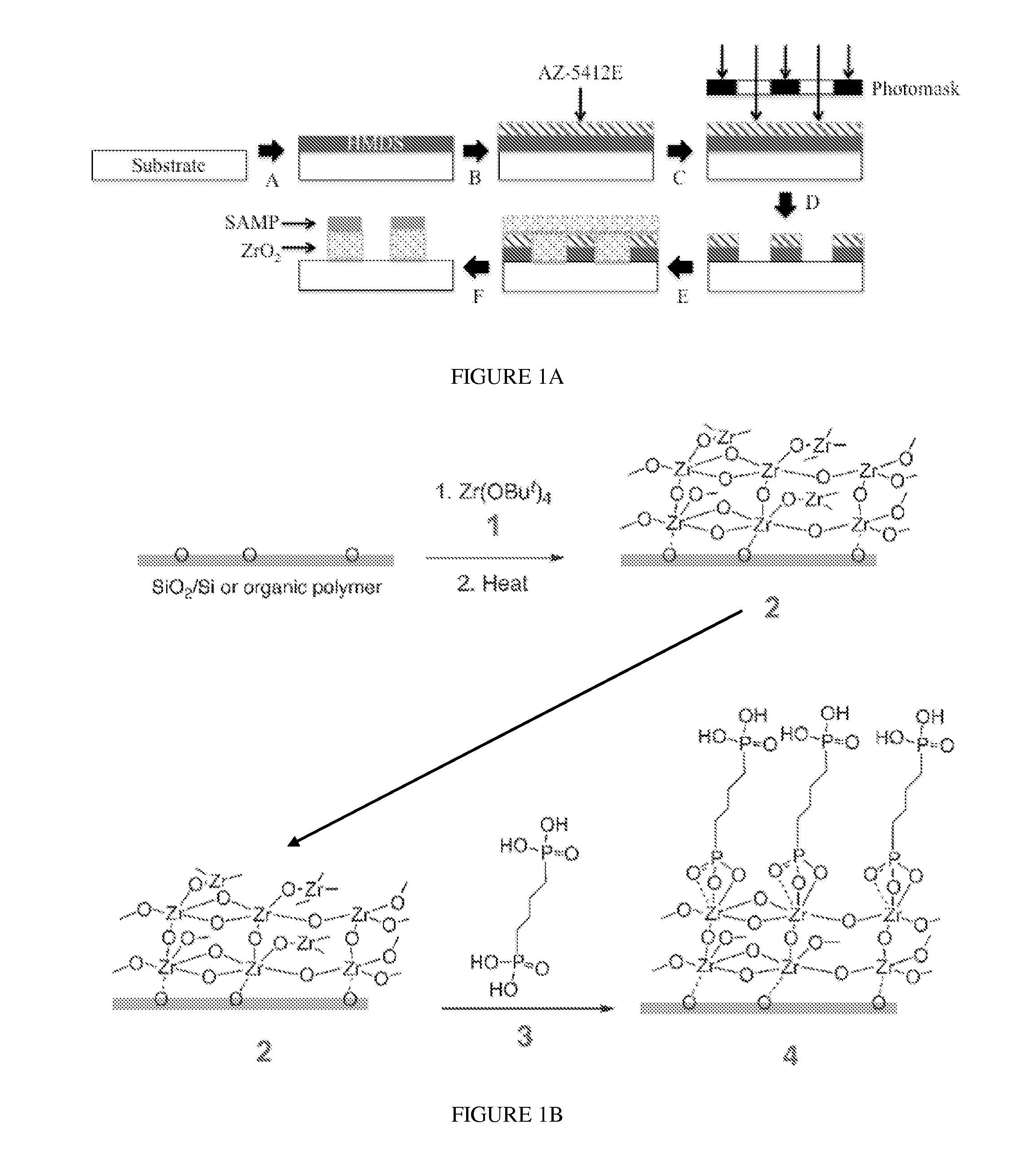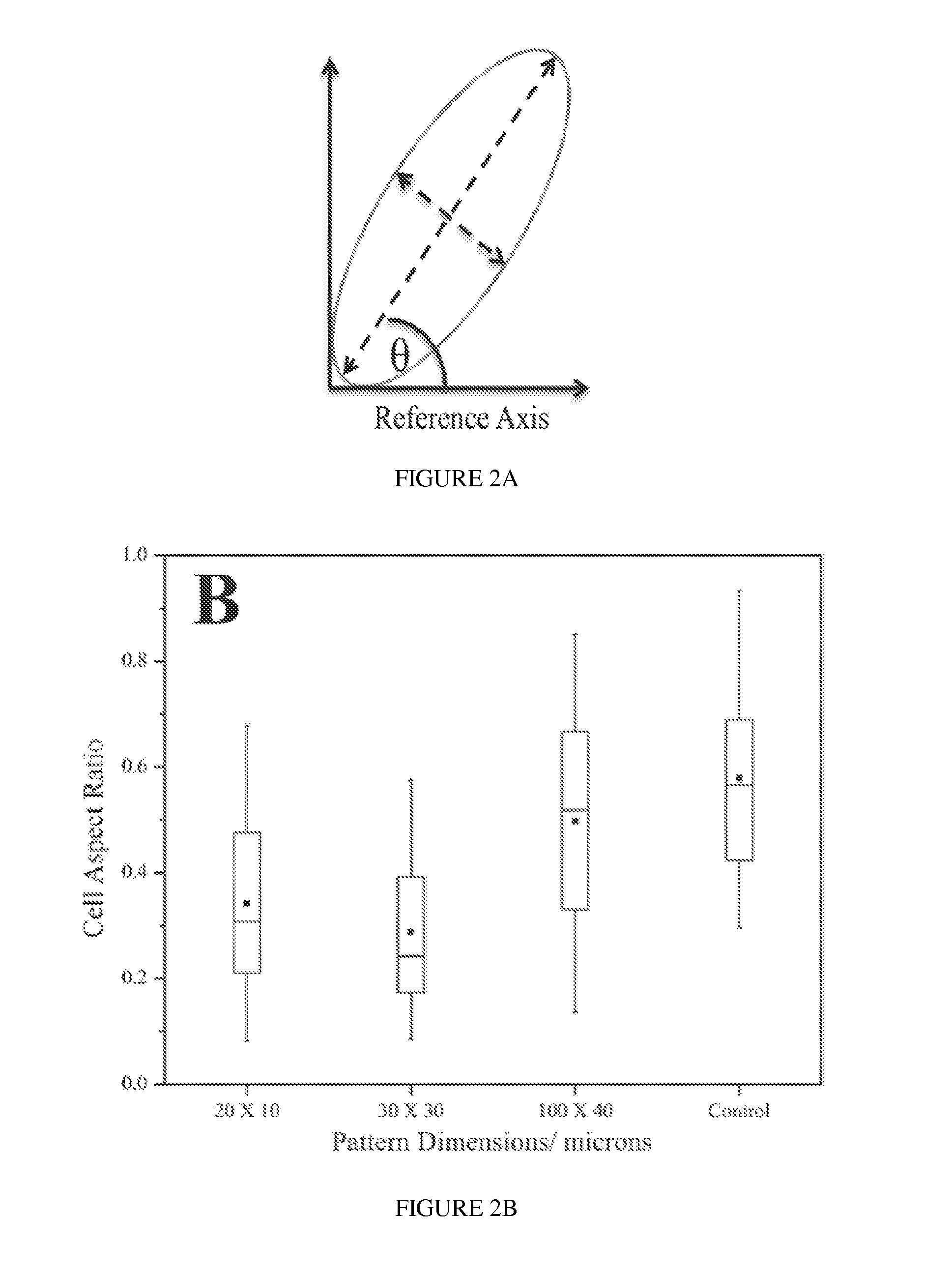Scaffolds for tissues and uses thereof
a tissue and clamping technology, applied in the field of tissues clamping, can solve the problems of limited size and thickness of stamping of biologics, affecting the organization of the ecm,
- Summary
- Abstract
- Description
- Claims
- Application Information
AI Technical Summary
Benefits of technology
Problems solved by technology
Method used
Image
Examples
example 1
Materials and Methods
[0110]Materials: p-Type, heavily boron-doped silicon terminated with a 1000 Å thermally grown oxide layer (Silicon Quest, Inc.), polyetheretherketone, nylon 6,6, and polyethylene terephthalate films of 0.05 mm thickness (Goodfellow, Corp.), glass cover slips (12 mm, No. 2; VWR) were obtained from commercial sources. The dimensions of the photolithographic patterns used were (width of stripe×space between stripes; all nominal dimensions are in μm): 10×10, 20×20, 10×20, 20×10, 20×30, 30×10, 30×30, 40×30, 50×30, 60×30, and 100×40. Some minor shadowing was observed with stripes ≦20 μm. Hexanes, toluene, methanol, 2-propanol, hexamethyldisilazane (HMDS), formaldehyde, 4′,6-diamidino-2-phenylindole (DAPI), and anti-vinculin antibodies (Sigma-Aldrich); zirconium tetra(tert-butoxide) (Strem Chemicals, Inc.); fluorescein-tagged secondary antibody, Dulbecco's modified eagle medium (DMEM) (Invitrogen); bone marrow derived human mesenchymal stem cells (hMSCs, PT-2501), seru...
example 2
Preparation and Characterization of Surface-Modified Substrates
[0121]Materials surfaces were chemically modified as shown in FIG. 1A. Spin-casting of hexamethydisilazane (HMDS) was followed by spin-casting AZ-5412E photoresist; the photoresist-coated material was exposed to UV light through a photomask of a negative of the desired striped pattern; the surface was developed in AZ-312 MIF to remove exposed photoresist; the substrate was exposed to vapor of zirconium tetra(tert-butoxide) (1) to yield the ZrO2 layer when deposition was followed by mild thermolysis; the SAMP was then formed through immersion in an ethanol solution of 1,4-diphosphonobutane (this step also removed remaining photoresist exposing the underlying substrate). The synthesis of SAMP / ZrO2 / substrate (4) is outlined in FIG. 1B. Eleven striped patterns defined as the width of the SAMP / ZrO2 stripe (in μm)×spacing between stripes (in μm), e.g., 20×30 were used.
[0122]Spectroscopic analysis was used to determine elementa...
example 3
Stability of Patterns on Substrates
[0124]All surfaces maintained the ZrO2 stripes intact for the duration of an 18 day study in which they were immersed in standard cell culture medium (10% calf serum in DMEM) at 37° C. Optical microscopy showed no evidence of stripe peeling or delamination. XPS analysis of coupons showed the persistence, but with signal attenuation, of the Zr 3d peak and with the appearance of an N 1s peak and higher binding energy shoulders on the C 1s peak These spectroscopic changes are attributed to serum protein adsorption onto the ZrO2. Attenuation of the Zr 3d peak was somewhat more pronounced on the glass substrate, and it could not be detected after day 9. AFM analysis showed that the height of the patterned ZrO2 stripe on Si (relative to that of underivatized regions) remained nearly constant following an initial increase in height within 9 days of immersion. For example, the initial pattern height of ZrO2 / SiO2 / Si was 12 nm; after immersion in culture med...
PUM
| Property | Measurement | Unit |
|---|---|---|
| width | aaaaa | aaaaa |
| width | aaaaa | aaaaa |
| width | aaaaa | aaaaa |
Abstract
Description
Claims
Application Information
 Login to View More
Login to View More - R&D
- Intellectual Property
- Life Sciences
- Materials
- Tech Scout
- Unparalleled Data Quality
- Higher Quality Content
- 60% Fewer Hallucinations
Browse by: Latest US Patents, China's latest patents, Technical Efficacy Thesaurus, Application Domain, Technology Topic, Popular Technical Reports.
© 2025 PatSnap. All rights reserved.Legal|Privacy policy|Modern Slavery Act Transparency Statement|Sitemap|About US| Contact US: help@patsnap.com



